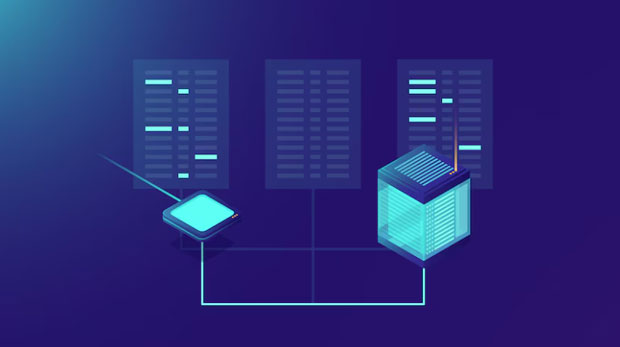Static residential sock s5 proxies are gaining significant traction in various industries due to their ability to provide stable, anonymous, and reliable access to the internet. These proxies are particularly suitable for businesses that require consistent IP addresses and the ability to bypass geo-restrictions. Unlike regular residential proxies, static residential SOCKS5 proxies provide a fixed IP address, which ensures that the connection remains uninterrupted. This makes them a crucial tool for several high-demand scenarios where security, consistency, and anonymity are key. In this article, we will explore the different business scenarios where static residential SOCKS5 proxies can add value, and why they are essential for success in today’s digital world. 1. E-commerce and Price ScrapingOne of the most significant use cases for static residential SOCKS5 proxies is in e-commerce and price scraping. In a competitive e-commerce environment, businesses need to continuously monitor competitors’ prices and products. Static residential SOCKS5 proxies help scrape pricing data from different websites without the risk of IP blocks or CAPTCHA challenges. Since these proxies offer consistent IP addresses, they allow users to scrape data from e-commerce platforms, competitors, and marketplaces without interruption, which is crucial for maintaining accurate and up-to-date data for dynamic pricing models.2. Social Media Management and AutomationStatic residential SOCKS5 proxies are also highly beneficial for social media management and automation. Businesses running multiple social media accounts need to operate under different IP addresses to avoid getting flagged or banned. static residential proxies provide consistent IP addresses that help maintain the authenticity of social media accounts while automating actions such as posting, liking, commenting, and following. These proxies can also be used to manage multiple accounts across platforms like Facebook, Instagram, and Twitter without worrying about account suspensions or geo-blocking.3. Online Advertising and Ad VerificationIn the world of online advertising, verifying the effectiveness and targeting accuracy of ads is vital for businesses. Static residential SOCKS5 proxies are ideal for running ad verification tools. These proxies enable marketers to access the internet from various locations around the world, allowing them to ensure that ads are being shown to the intended audience. By using these proxies, businesses can check the placement of their ads on websites, review geographical targeting, and even bypass geo-restrictions that may limit ad visibility. This helps businesses ensure they are getting the best return on investment for their ad campaigns.4. Bypassing Geo-Restrictions and Accessing Region-Locked ContentAnother critical business use case for static residential SOCKS5 proxies is bypassing geo-restrictions and accessing region-locked content. Certain digital content such as streaming videos, services, and websites are often restricted to specific regions. For businesses that require access to international content for market research, customer insights, or regional services, static residential SOCKS5 proxies offer a secure and consistent way to access this information. These proxies provide IP addresses from different locations, ensuring that businesses can unlock valuable content that would otherwise be inaccessible due to regional restrictions.5. SEO and Local Search Engine TestingSearch Engine Optimization (SEO) is a crucial strategy for businesses that want to improve their online visibility. Static residential SOCKS5 proxies are beneficial for businesses involved in SEO, especially for testing local search engine results. With static residential proxies, businesses can simulate searches from various locations to analyze how their website ranks in different regions. This helps businesses optimize their content, keywords, and digital marketing strategies to target specific markets. Moreover, these proxies help avoid IP blocking or search engine algorithm penalties for scraping search results.6. Sneaker Copping and Limited Product DropsStatic residential SOCKS5 proxies have a significant application in the world of sneaker copping and limited product drops. Sneakers and other high-demand products are often released in limited quantities, and bots are used to purchase them as soon as they go live. To compete with these bots, sneaker enthusiasts and businesses rely on static residential proxies to increase their chances of success. These proxies help users to avoid getting banned by online retailers, as they appear as genuine residential users rather than automated bot traffic. By using static residential SOCKS5 proxies, users can increase their chances of securing limited-edition products.7. Market Research and Competitor AnalysisMarket research and competitor analysis are essential for any business looking to stay ahead of its competition. Static residential SOCKS5 proxies help businesses gather insights without risking IP bans or CAPTCHA challenges. These proxies allow companies to monitor their competitors’ websites, collect data on pricing, promotions, inventory, and product offerings, and conduct surveys and polls without interference. By using static residential proxies, businesses can ensure they are not flagged as suspicious, allowing them to gather critical market intelligence efficiently.8. Fraud Prevention and SecurityFraud prevention and security are key concerns for businesses that operate in sensitive areas such as online banking, financial services, and e-commerce. Static residential SOCKS5 proxies help enhance security by hiding users’ real IP addresses and preventing identity theft. These proxies help businesses identify fraudulent activity by allowing them to monitor and detect suspicious IP addresses or locations. Additionally, these proxies can be used for securing online transactions, preventing phishing attacks, and ensuring the protection of sensitive customer data.9. Data Harvesting and Web ScrapingWeb scraping and data harvesting have become critical components of business intelligence and competitive analysis. Static residential SOCKS5 proxies provide the necessary infrastructure for scraping large volumes of data from various sources without triggering anti-bot mechanisms. Businesses can use these proxies to collect data from websites, forums, blogs, and online marketplaces to gain insights into customer behavior, trends, product feedback, and market demands. By using static residential proxies, businesses ensure a smooth and uninterrupted scraping experience, allowing them to collect valuable data without the risk of detection or blocking.10. Digital Marketing and Affiliate MarketingFor digital marketers and affiliate marketers, static residential SOCKS5 proxies are invaluable tools for accessing websites and online platforms without revealing their real location. These proxies allow marketers to perform research, manage accounts, and analyze marketing campaigns without being blocked or restricted by platforms that monitor IP addresses. Whether it’s conducting market research, running ad campaigns, or testing affiliate links, these proxies provide the anonymity and consistency that digital marketers need to thrive in a competitive environment.Static residential SOCKS5 proxies offer a wide range of benefits for businesses across various industries. Their ability to provide consistent, anonymous, and secure connections makes them an essential tool for e-commerce, social media management, advertising, SEO, market research, and more. By leveraging these proxies, businesses can bypass geo-restrictions, protect their privacy, improve customer experiences, and optimize digital strategies. As the digital landscape continues to evolve, static residential SOCKS5 proxies will remain a vital resource for companies looking to gain a competitive edge in the online world.
Sep 16, 2025





















































